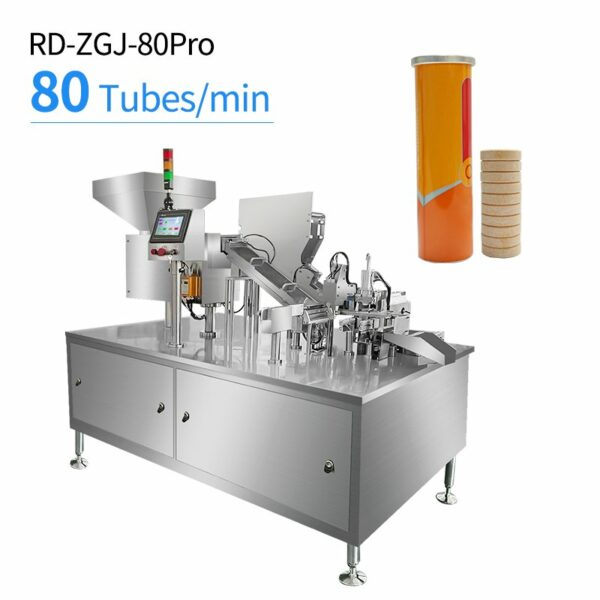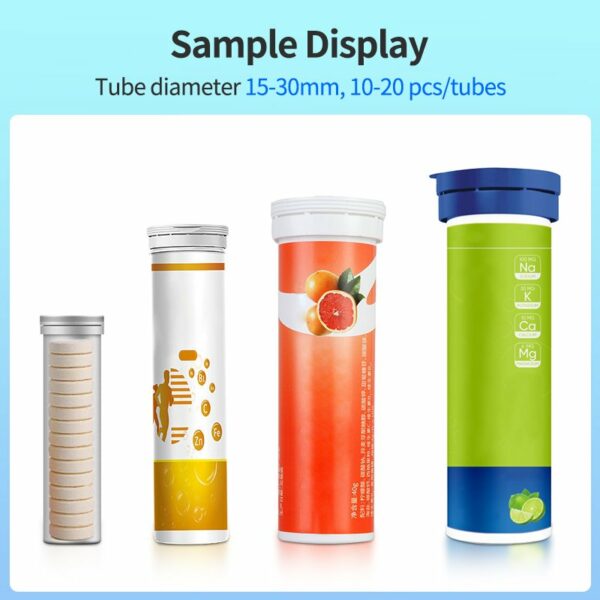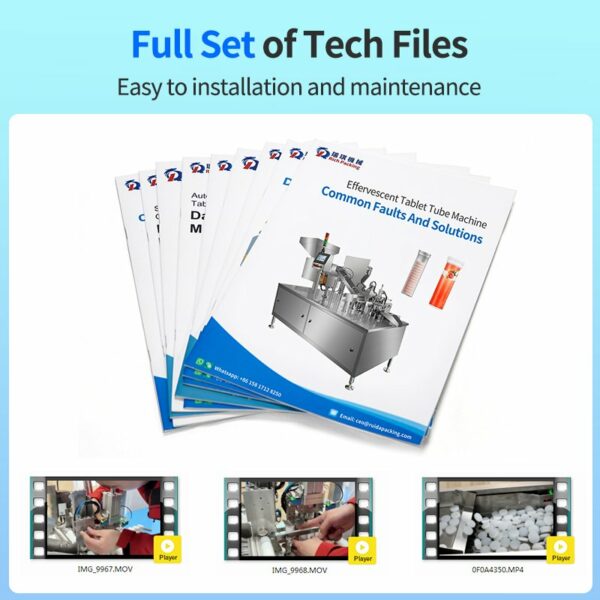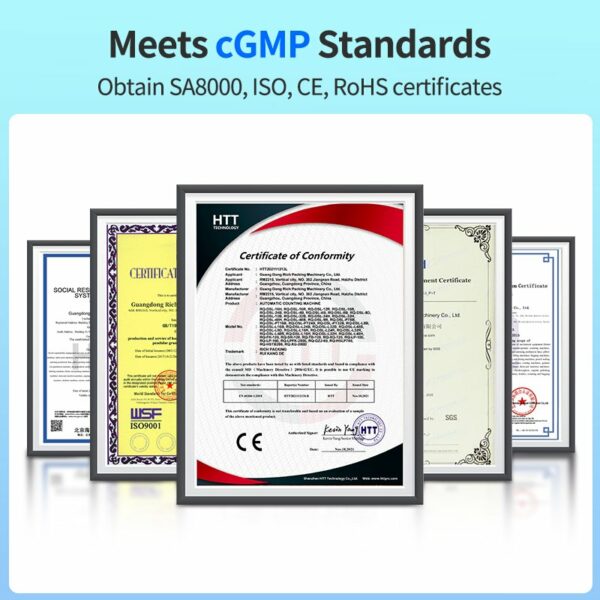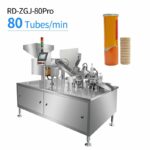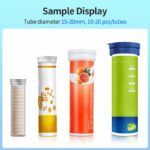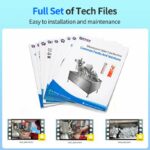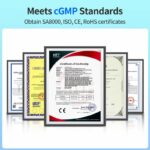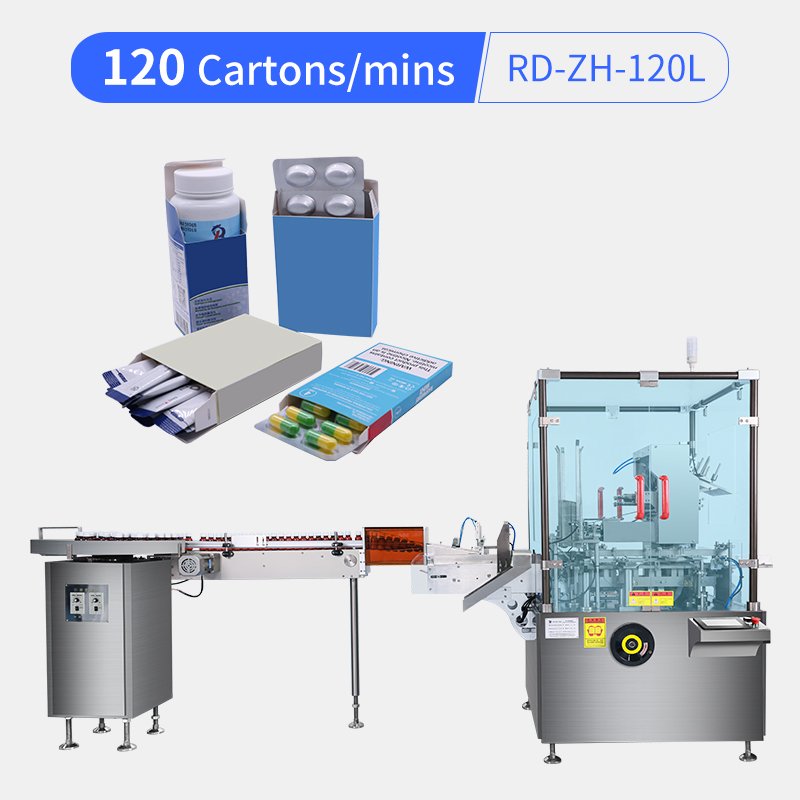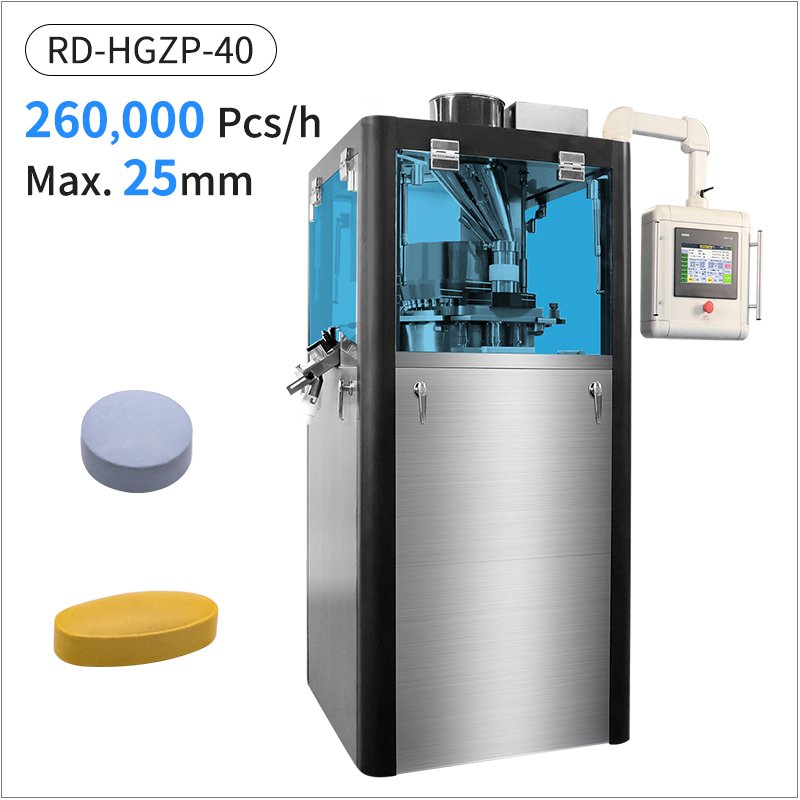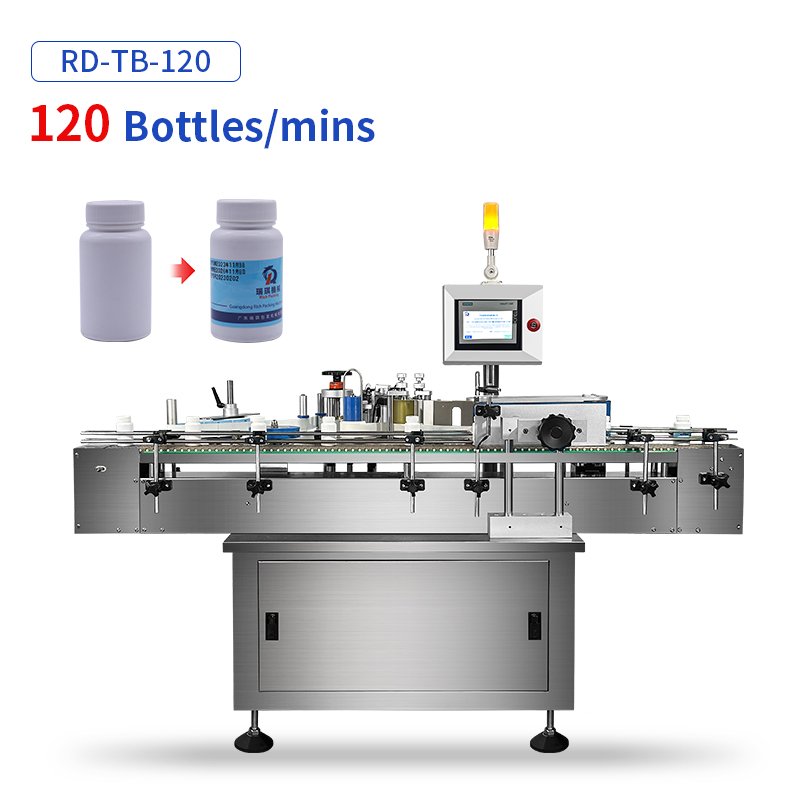Qu'est-ce que les comprimés effervescents ?
Les comprimés effervescents sont des suppléments dissolvants qui libèrent du dioxyde de carbone lorsqu'ils sont plongés dans l'eau, ce qui les rend populaires pour les vitamines, les produits pharmaceutiques et les boissons fonctionnelles.
Une ligne de production de comprimés effervescents moderne comprend :
Presse à comprimés à grande vitesse ZP-40
Détection de métaux
Dépoussiéreur de comprimés
Machine de remplissage de tubes de comprimés effervescents
Étiqueteuse
Machine à cartonner
Machine de palettisation
1. Presse à comprimés effervescents
La presse à comprimés haute vitesse ZP-40 est au cœur de la production de comprimés effervescents. Elle transforme des mélanges de poudres (bicarbonate de sodium, acide citrique, vitamines) en comprimés solides sous haute pression. Ses principales caractéristiques sont les suivantes :
Compression basée sur le moule : les poinçons supérieurs et inférieurs forment le comprimé à l'intérieur de la cavité du moule.
Contrôle précis de la pression : les comprimés effervescents nécessitent une faible dureté (2-4 kgf/cm²) pour une dissolution rapide.
Mesures anti-adhérentes : les matrices revêtues empêchent les poudres hygroscopiques d'adhérer.
1). Principe de fonctionnement
Alimentation en poudre
Un alimentateur forcé assure un remplissage uniforme de la poudre dans les matrices (essentiel pour la cohérence du poids ; tolérance de profondeur ≤ 0,5 mm).
Pré-compression et compression principale
Précompression (21 kN) : Élimine les poches d'air pour minimiser le bouchage.
Compression principale (100 kN) : les poinçons à double action appliquent une force synchronisée pour la formation finale du comprimé (épaisseur ajustée via la position du rouleau de pression).
Éjection et dépoussiérage
Le poinçon inférieur éjecte les comprimés sur un convoyeur, guidé par une lame racleuse.
L'aspiration sous vide intégrée élimine l'excès de poudre (réduisant ainsi la charge de travail de tamisage en aval).
2). Avantages
Outillage multi-pointes : 40 matrices permettent des vitesses allant jusqu'à 260 000 comprimés/heure.
Surveillance en temps réel : les cellules de charge détectent les écarts de poids (rejet automatique en cas de non-conformité).
Efficacité et stabilité : une production ininterrompue réduit les coûts de production.
Faible taux de rupture : les réglages de pression adaptatifs conviennent aux mélanges effervescents friables.
Intégration intelligente : liaison transparente avec les détecteurs de métaux pour la fabrication en boucle fermée.
2. Machine de remplissage et de bouchage de tubes
La remplisseuse de tubes de comprimés effervescents est un équipement de conditionnement de haute précision permettant de remplir automatiquement des tubes en aluminium ou en plastique. Elle est largement utilisée dans les secteurs pharmaceutique, de la santé et agroalimentaire. Ses principales fonctions incluent le tri automatique des tubes, le comptage et le remplissage précis, le scellage et les tests, pour garantir une production efficace et sans pollution.
Chargement et orientation des tubes
Les opérateurs chargent manuellement les tubes dans un bol vibrant, qui les aligne et les alimente automatiquement de manière directionnelle vers des positions de remplissage fixes.
Manipulation et positionnement des bouchons
Les bouchons sont chargés manuellement dans un bol vibrant secondaire, orientés selon des spécifications prédéfinies et transportés vers des stations de bouchage précises.
Alimentation en comprimés et comptage personnalisé
Les comprimés provenant des trémies de stockage passent par un mécanisme de tamisage pour éliminer les débris de poudre.
Les canaux coulissants réglables contrôlent le nombre de comprimés par tube (bloquez 5 canaux pour remplir 15 comprimés au lieu de 20).
Remplissage et inspection de précision
Les comprimés glissent dans les tubes aux emplacements désignés.
Les capteurs photoélectriques vérifient les quantités exactes de comprimés dans chaque tube.
Scellage et rejet automatisés
Les tubes qui passent l'inspection sont automatiquement bouchés.
Les tubes défectueux (comptes incorrects/absence de comprimés) sont immédiatement rejetés.
Étiqueteuse
Une étiqueteuse automatise le processus d'application d'étiquettes sur les tubes de comprimés effervescents avec précision. Elle se compose généralement d'un distributeur d'étiquettes, d'un système de convoyage et d'une tête d'application. La machine déroule les étiquettes d'un rouleau, détecte leur position grâce à des capteurs et les applique sur les éléments en mouvement grâce à la pression et à l'adhésif. Les modèles avancés intègrent des systèmes de vision pour le contrôle de l'alignement et l'impression de données variables (codes-barres). Largement utilisées dans les secteurs agroalimentaire, pharmaceutique et logistique, ces machines garantissent un étiquetage à grande vitesse (jusqu'à 120 étiquettes/min), cohérent et sans erreur, réduisant ainsi le travail manuel et améliorant la traçabilité.
Alimentation par étiquettes: Distribue automatiquement des étiquettes à partir de rouleaux ou de feuilles.
Positionnement et application précis:Utilise des capteurs pour détecter la position du produit avant d'appliquer l'étiquette.
Pressage et lissage: Assure une adhérence sans bulles et sans plis pour une meilleure esthétique et durabilité.
Les machines d'étiquetage fonctionnent en quatre étapes clés : le pelage, le positionnement, l'application et l'inspection, garantissant un étiquetage à grande vitesse et de haute précision pour une efficacité industrielle.
Machine à cartonner
Une encartonneuse automatise l'insertion précise des tubes de comprimés effervescents dans les cartons. Elle est largement utilisée dans les emballages pharmaceutiques, alimentaires et cosmétiques.
Une machine de mise en carton automatique pour le chargement des tubes de comprimés effervescents, l'inspection des matériaux, le manuel d'instructions pliable, jusqu'à quatre plis, les formes des cartons, le tube de comprimés effervescents et le manuel d'instructions dans les cartons, les oreilles pliantes, l'impression du numéro de lot, l'insertion de la languette, le rejet et la sortie.
Machines de palettisation
Une machine de palettisation automatise l'empilage et le rangement des cartons (emballage de tubes de comprimés effervescents) sur des palettes pour le stockage et l'expédition. Elle utilise généralement des bras robotisés ou des systèmes de portique équipés de ventouses ou de pinces mécaniques pour prélever les articles sur un convoyeur et les placer selon des schémas préprogrammés. Des capteurs assurent un positionnement précis, tandis qu'un logiciel optimise la stabilité et la répartition du poids. Les modèles avancés intègrent la vision industrielle pour des ajustements en temps réel. Ce système améliore l'efficacité, réduit les coûts de main-d'œuvre et minimise les erreurs de chargement dans des secteurs tels que l'agroalimentaire, les boissons et la logistique.
Toutes les machines sont disposées en fonction de la taille de l'usine, réparties dans une grande pièce ou plusieurs petites pièces, et reliées par des bandes transporteuses au milieu pour former une ligne de production complète de comprimés effervescents.
